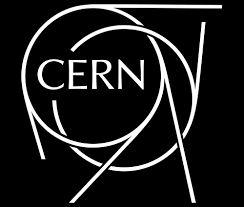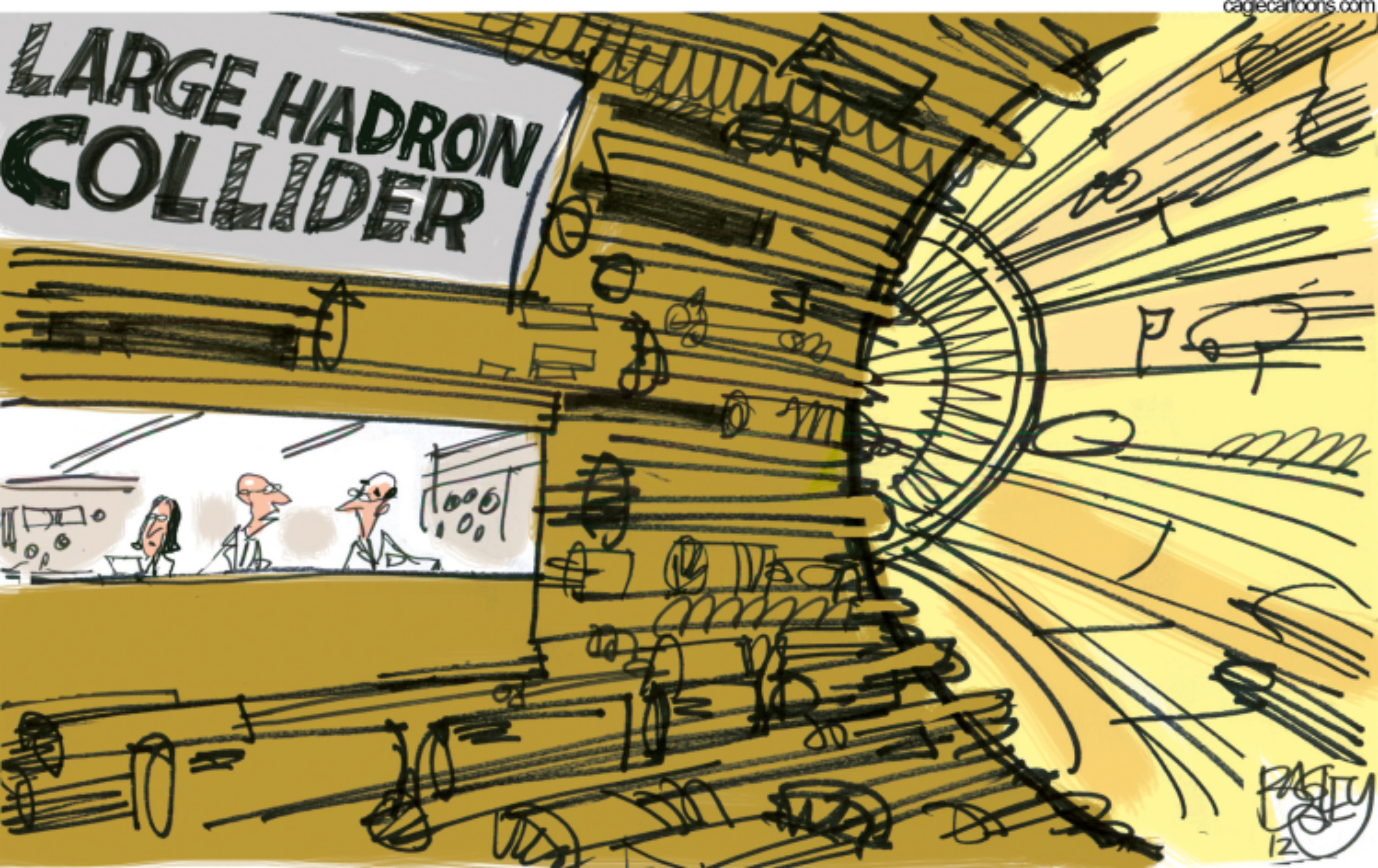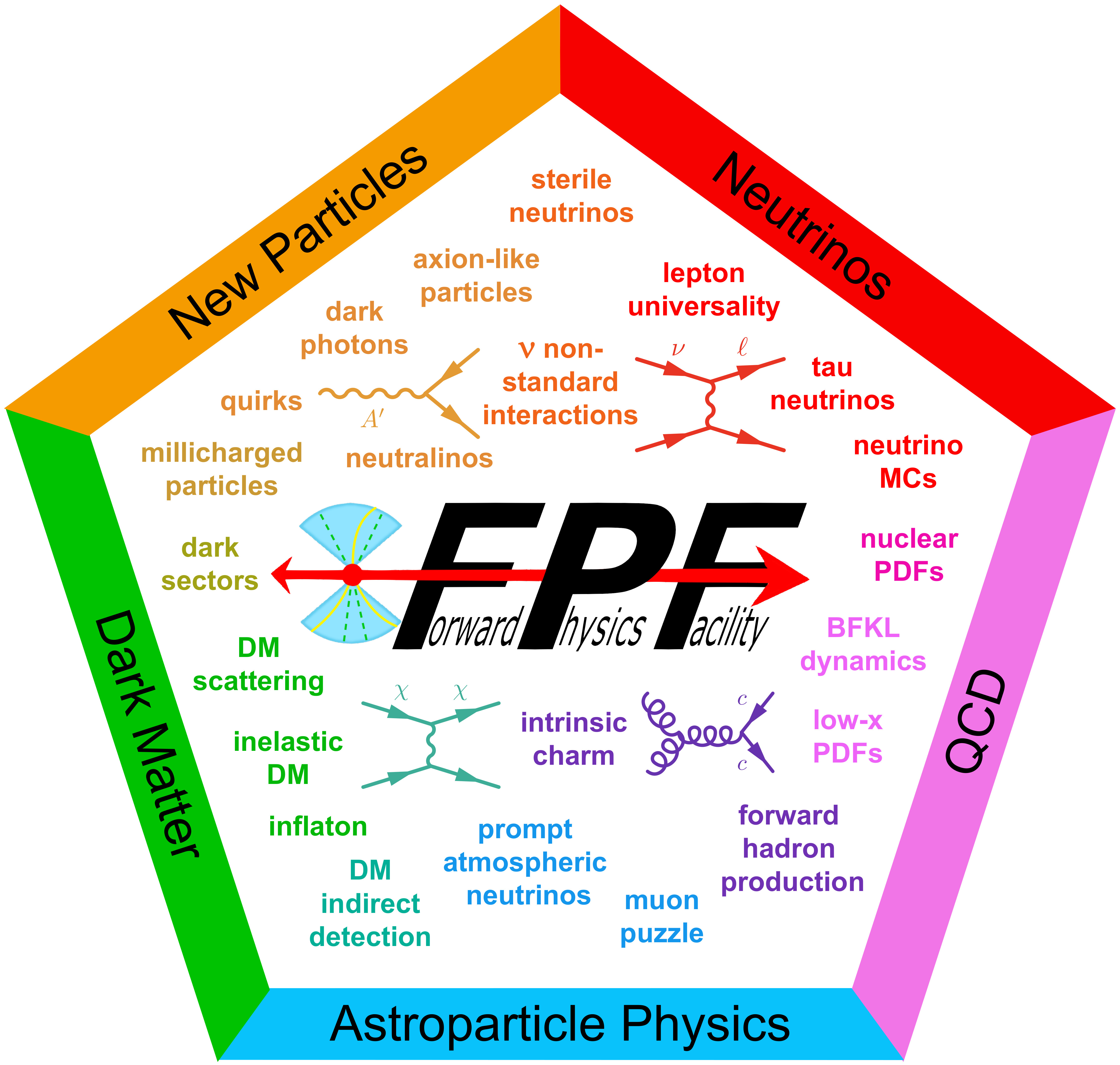
|
Forward Physics Facility |

|
| Experiments | Physics Beyond Standard Model | QCD | Neutrino Physics | Astroparticle Physics | Timeline and Cost |
|
The FPF will allow tests of a wide variety of theories of physics
Beyond the Standard Model (BSM), explaining outstanding questions
such as the hierarchy problem, neutrino masses, the nature of dark
matter (DM), inflation, and the matter-antimatter asymmetry of the universe. New particles and forces can be detected at the FPF in different ways. Many theories feature light, weakly-coupled particles that have lifetimes long enough to be produced at the ATLAS IP and subsequently decay within FPF detectors, like FASER2. Alternatively, DM particles may scatter inside a dense detector like Advanced SND, FASERnu2, or FLArE and produce visible signatures. Both electron and nuclear scattering are possible. Finally, some models have new states, for example, millicharged particles, which would leave non-standard energy deposits in detectors. Such particles could be observed at FORMOSA and possibly other detectors.
Searches for new heavy particles benefit from the unparalleled energies at the LHC, and the FPF will provide leading sensitivities if such states are preferentially produced in the forward direction, as in the case of quirks. Searches for light states may also be enhanced at the energy frontier, as they are produced with very high boosts, allowing probes of shorter lifetimes, or through rare B decays and similar processes that are much less common at other facilities. These capabilities result in unique projected sensitivities in many BSM models that surpass current, or even future expected, limits. |
